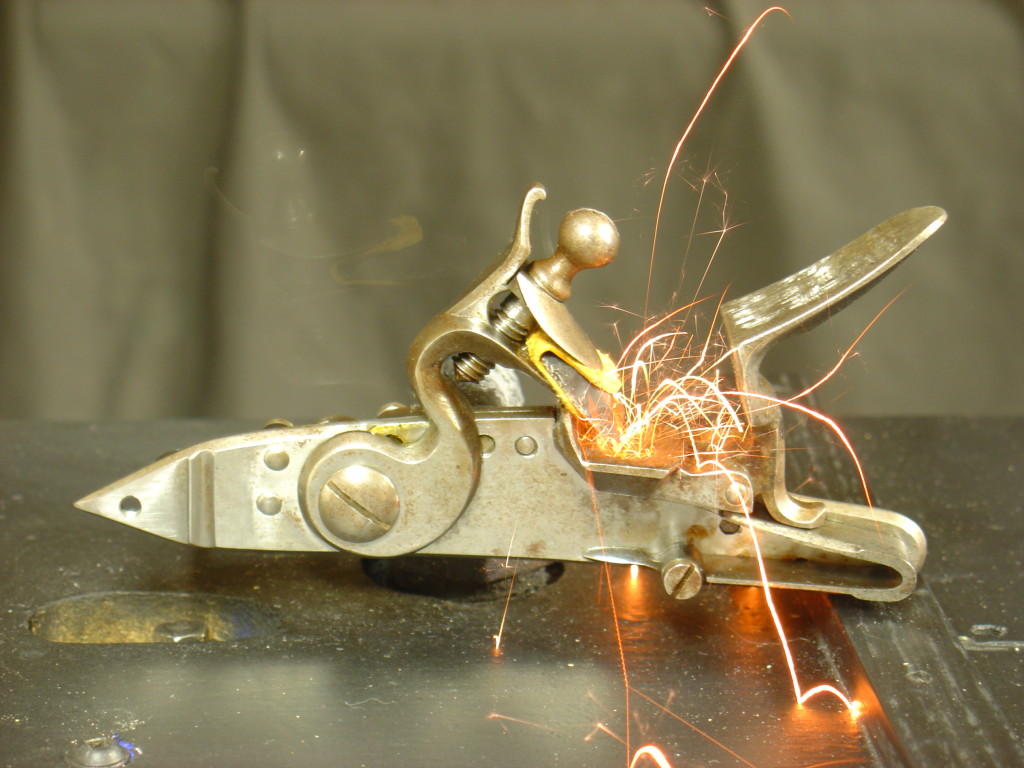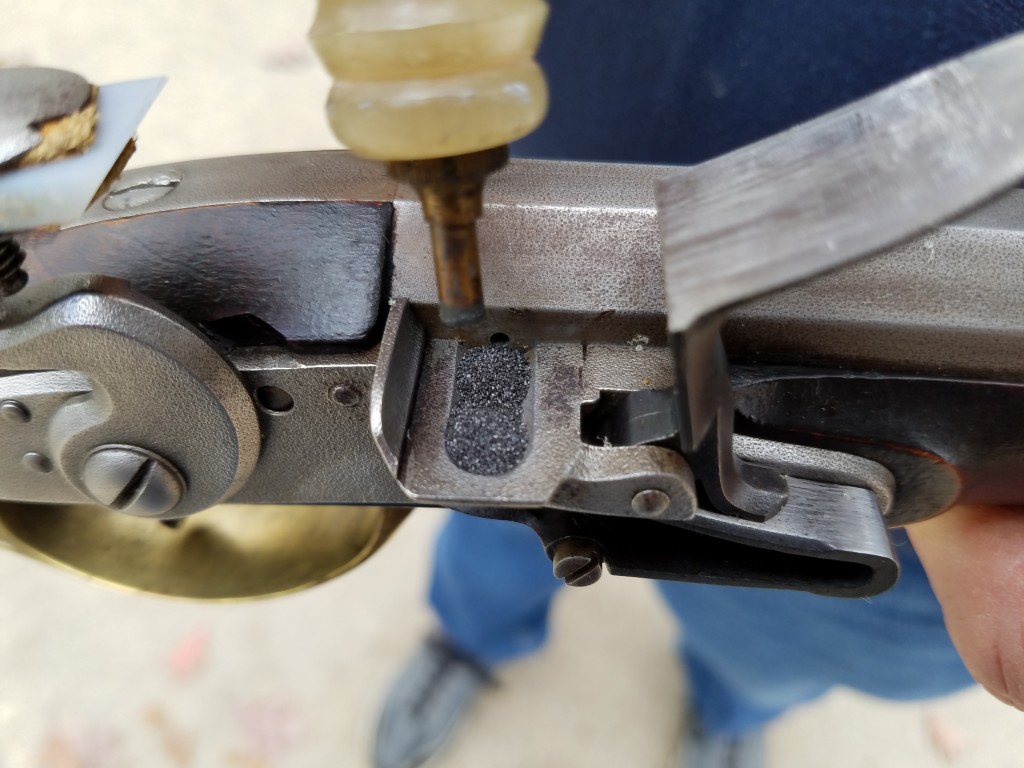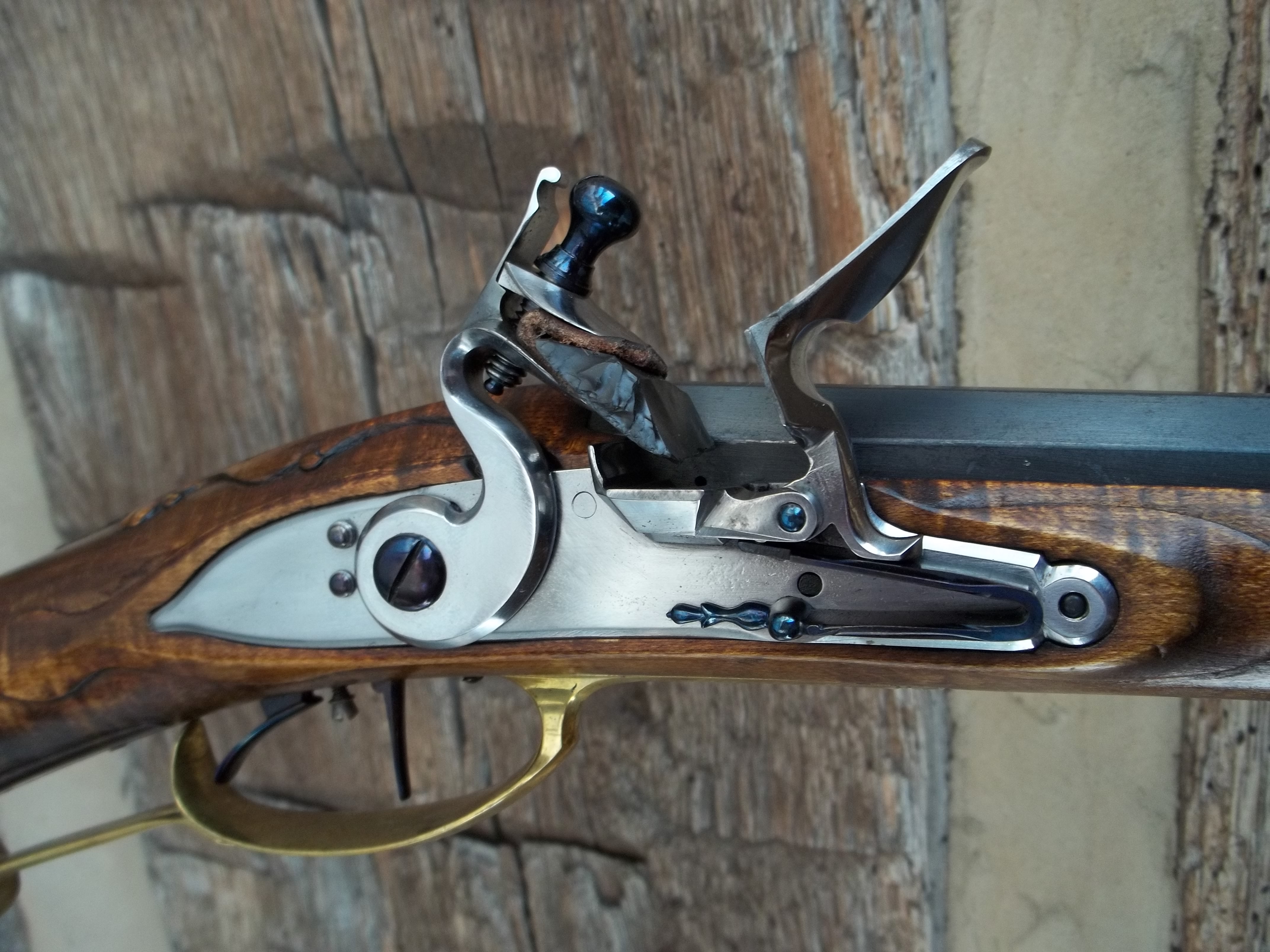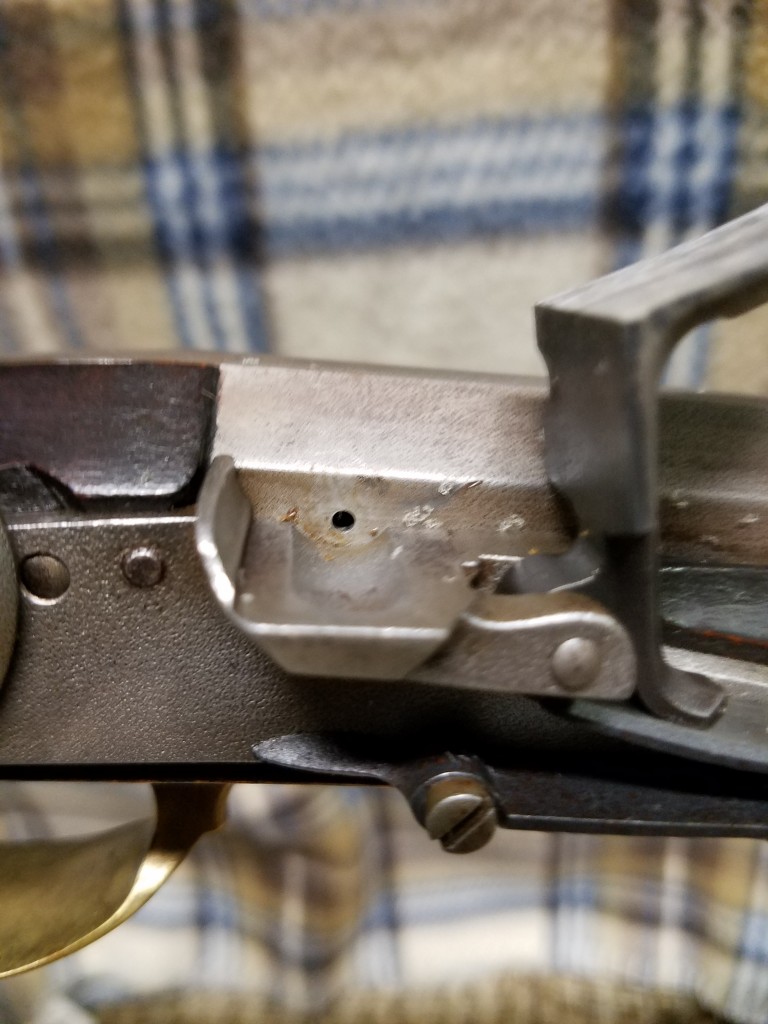You’ve opened up a new dimension in muzzle loading with a new flint rifle. Being experienced with a percussion gun is a good start because you know procedures dealing with loading and cleaning a round ball gun. The lock, however, brings new challenges.
Our discussion here is not meant to cover everything you need to know about shooting a flintlock. That would take books, and much of what you are about to learn will be taught you by your new lock. I will try to cover the basics and then let your lock teach you.

Lets talk about flints and sparks first. Most shooters like the knapped English flints or amber colored flints. I like both of these. Some locks like sawn agate. My locks do, however I would steer you clear of cheaper sawn dark stones. This is where you learn from your lock. It will teach you what works best. Lock suppliers will help with the proper size to use.
Your flint should be installed so that it is close but not touching the frizzen when on half cock. Most shooters I know like leather to hold the flint. When positioned well, the flint edge will be parallel with the frizzen surface and strike the frizzen about 1/3 of the way down. When at rest it should not contact the barrel flat.
Try “firing” the lock to see its spark production. In dim lighting you can get a good idea about how it’s doing. Close the frizzen and bring the cock to full cock. A good lock will produce many sparks that land in the pan. You may want to adjust the flint, experiment with flint types, try bevel up or down, etc. Let the lock teach you what works.
Let’s assume you like the spark production and go on to another issue. The vent in your barrel needs to be kept squeaky clean and dry of oil. I like to clear and dry my vent with a pipe cleaner. My vents are drilled to .067”. Many rifles come with a 1/16” hole (.0625’). My reason for using a .067” vent is not for better ignition – it’s so I can easily use a pipe cleaner when necessary. (A 1/16” vent will give good ignition if the lock and the vent are well maintained.)

Priming the pan can be done with various granule sizes of real black powder. The smaller the grain size, the faster the ignition will be. I’d suggest using 4fg to prime. Personally I like Swiss Null B for priming. The priming needs to give the sparks a bed on which to land, so cover the whole bottom of the pan. Make sure that some priming is close against the barrel. How full the pan should be depends on what your lock likes. Shooters argue about this – do what works for you. I don’t worry too much as long as I have priming against the barrel.
Without writing a book I tried to cover three basic flint problem areas: the lock, the vent, and the priming. As you shoot the gun, you will pick up many little tricks that with help. Other flint shooters are a good source of additional help. Most of this web site is devoted to flint shooting, flint ignition, lock timing, vent timing, etc. Take a look at the pull down windows on the home page for more help.
You are well on your way to a flint addiction. Welcome home.


Leave a Reply
You must be logged in to post a comment.